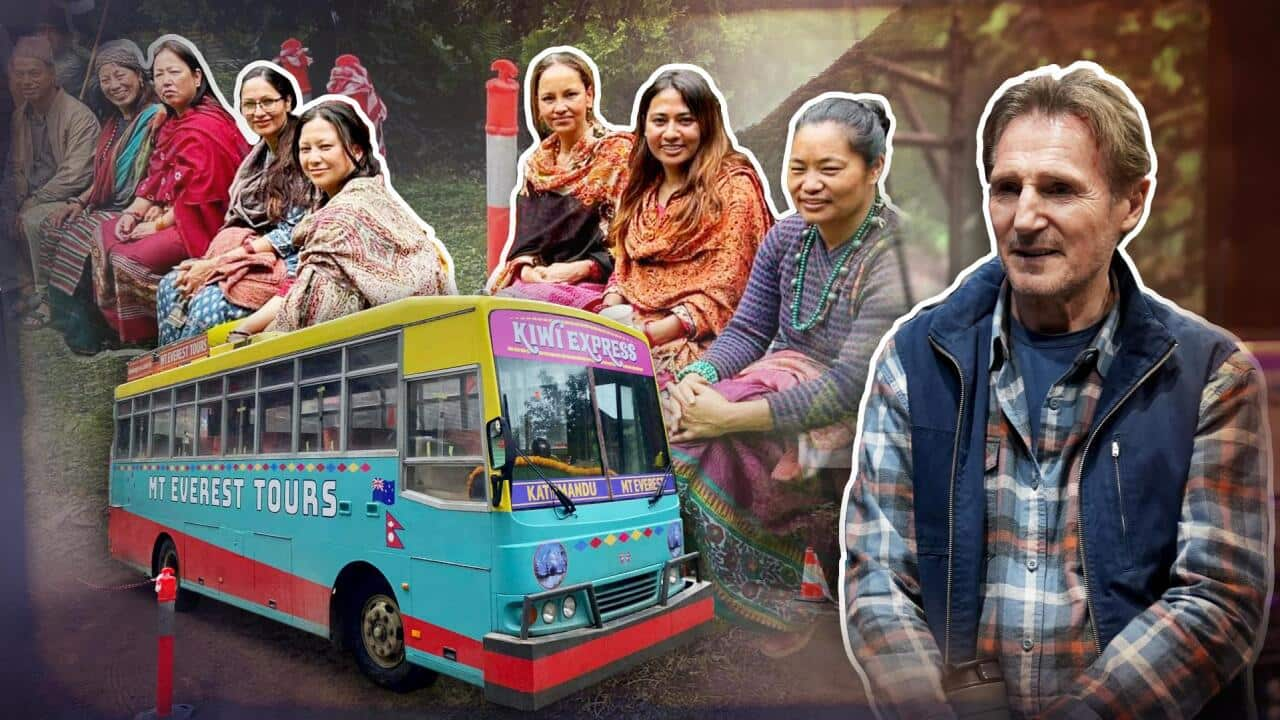Key Points
- Filmmakers Kalani Gacon and Sabin Gnawali are working on their first production together, Home Before Night.
- The shoot of a Hollywood movie starring Liam Neeson in regional Victoria has spurred calls for improvement in Nepal’s film industry.
- Cinema plays a vital role in cultural understanding and building interpersonal relations between countries.
Conversely, Gnawali moved down under from Nepal in 2012 for his higher studies and now works in the Australian film industry.

Kalani Gacon (left) and Sabin Gnawali (right) are discussing their new film project, Home Before Night. Source: SBS / Sweksha Karna
Gacon’s first Nepali film Bhukampa: A Story of Nepal’s Great Earthquake was a recreation of the real events that unfolded after the 2015 earthquake in Nepal.
The filmmakers are working on their first collaboration, Home Before Night, a Nepali film being made in an Australian production setting.
The role of cinema beyond entertainment
“On a government level, official meetings and visits take place only on a certain time schedule. But cinema builds a people-to-people relationship between countries on a regular basis.”

Walhalla in Victoria has been turned into a replica of a Nepali village for the shoot of Hollywood movie Ice Road 2: Road to the Sky. Source: Facebook / Walhalla
One such example is the Hollywood actor Liam Neeson starring movie Ice Road 2: Road to the Sky, which was shot in a regional Victorian township in Australia in February.
The movie takes place in Nepal and is said to feature members from Australia’s Nepali community who worked as extras.
“It’s a small-town message with big implications. And especially I think for all cultures and even though this is about Nepal, I think it’s relatable to cultures all over the world that have their own traditions.”

The Ice Road 2: Road to the Sky team with VicScreen CEO Caroline Pitcher (centre) at Docklands Studios, Melbourne. Credit: SBS Nepali/Dinita Rishal
Navigating cultural differences
“I tried to change that in Nepal, and I failed, I failed miserably. It’s a beauty in that casualness and chaos.”

Australian filmmaker Kalani Gacon says he is desperate to go back to Nepal. Credit: Kalani Gacon
Gacon agreed, recalling a time when he was working on a feature film as an assistant director in Nepal where most of the crew members were Nepali.
“I have tried my best to adopt and adapt the systems of both places to make it work.”
Multiculturalism in mainstream movies
“I spoke to them in their language and it was a very beautiful experience to communicate with people and showcase our cultural diversity on screen which is not as common in a lot of films,” he told SBS Nepali.

Members of the Nepali community worked as extras during the Ice Road 2: Road to the Sky shoot in Walhalla. Credit: Supplied/Amrita Gurung
Melbourne resident Amrita Gurung is one of the Nepali extras who worked on the set in Walhalla.
“Since Hollywood movies have a wider audience, I take pride that Nepal has been represented.”
The question asked by many: Why was Ice Road 2 not shot in Nepal?
Producer Bart Rosenblatt said the primary reason that attracted the team to Victoria was the tax incentive.

A vehicle painted to resemble buses in Nepal. Source: Facebook / Walhalla
“We searched all around the world and settled on Victoria, a) because of the tax credit, b) because of this really great virtual stage that they have here, which is state-of-the-art,” he told SBS Nepali.
Producer Corley said that some parts of the movie have also been shot in Nepal to capture the realism.
Nepali movie industry
“While Nepal might not be able to provide millions in tax incentives as Australia, it should focus on creating a welcoming environment to international film productions, and simplify the complex administrative processes.”
